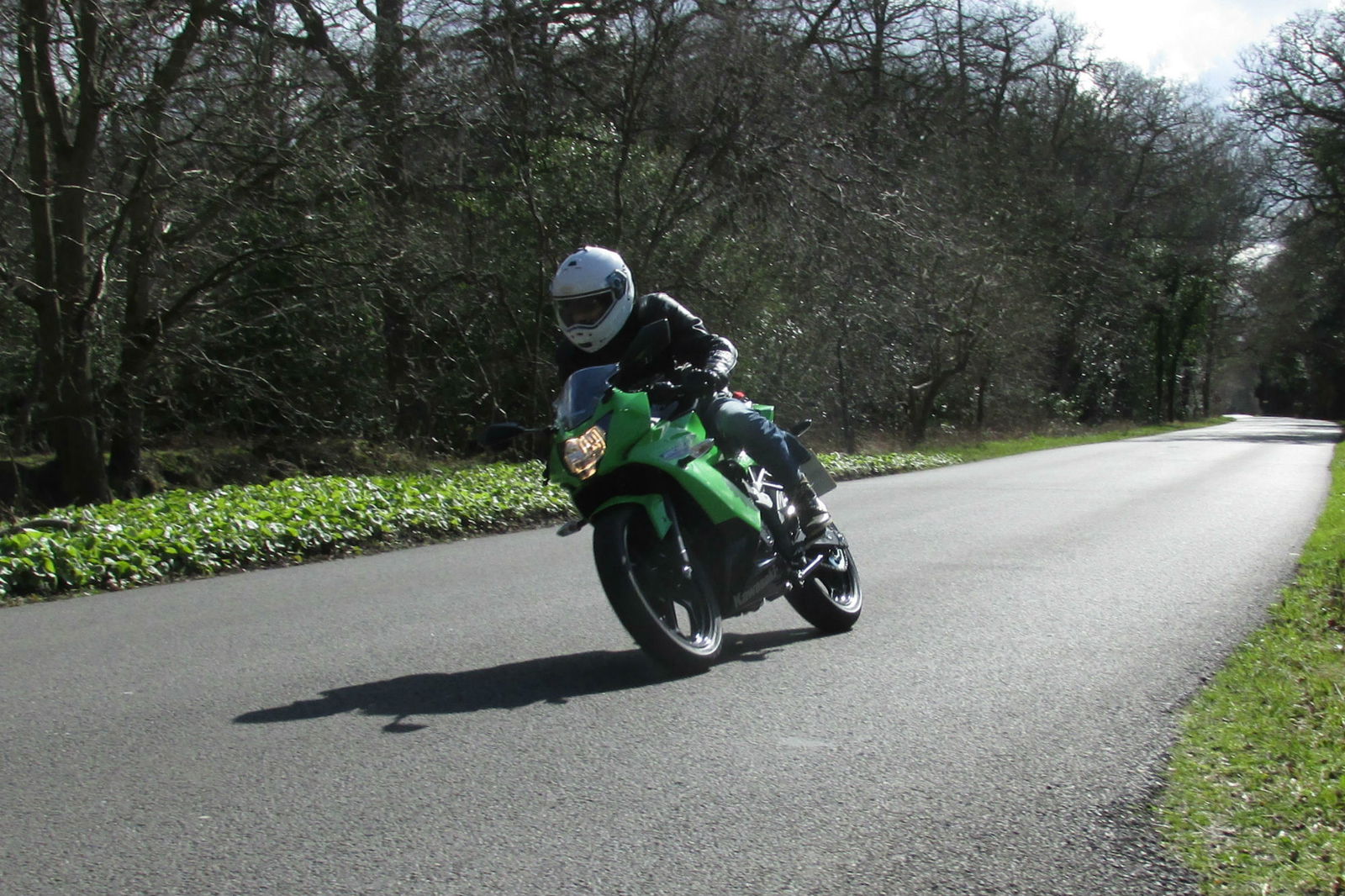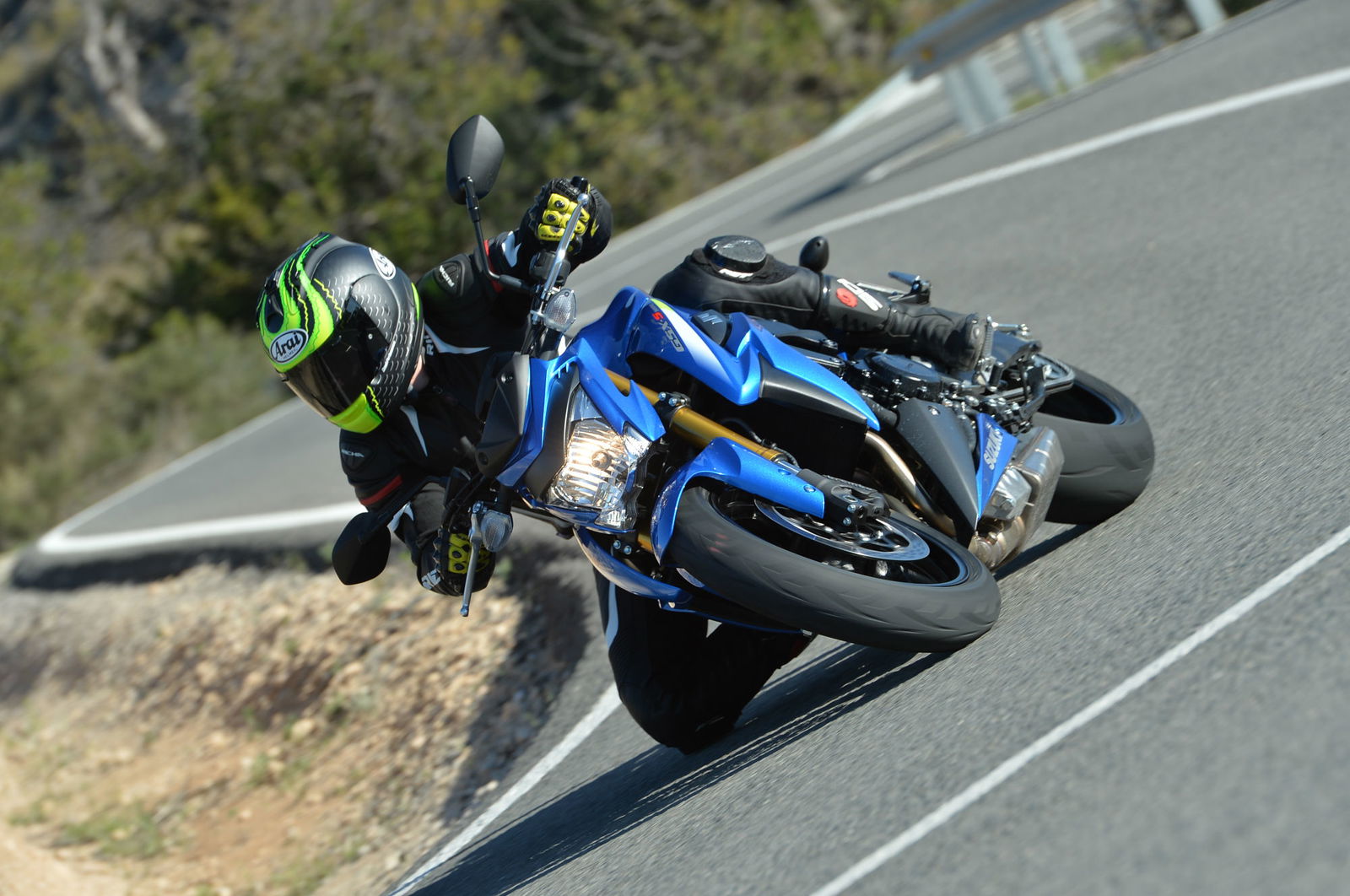First ride: Kawasaki Ninja 250SL review
Like a sharp 125cc sports bike, but faster

REDUCE a motorcycle to its essentials, with enough power to do about 100mph and no more weight or bulk than necessary. What have you got? Probably something like Kawasaki’s new Ninja 250SL.
Launched in Asia last year, the single-cylinder Ninja makes a surprise entry into the UK market for 2015, along with the Z250SL, a naked version of the same machine with different handlebars and bodywork.
We can see why Kawasaki has done it. For years the parallel-twin Ninja 300 has been lumped into the same sub-500cc sports category as single-cylinder machines like Honda’s CBR300, and suffered criticism for being about £1,000 more expensive.
We did it ourselves when we compared the Ninja 300 and Daelim VJF250 RoadSport. The Kawasaki, at five grand, was of course the more accomplished machine, we concluded, but the £3,000 Daelim might be better for those simply seeking a low-cost entry to motorcycling.
Now Kawasaki has a new answer to that problem. In a diversifying sub-500cc market, the Ninja 250SL goes up against your CBR300 and VJF250, while the Ninja 300 (and now Z300) faces the similarly priced KTM RC390 and Yamaha’s forthcoming YZF-R3.
The Ninja 250SL is £3,859 and the Z250SL £3,649, both excluding on-the-road charges. Honda’s CBR300 is £4,299 on the road.
Will many people buy the Ninja? They should. It’s not just a low-cost motorcycle. More of a basic but effective weapon.
It’s unapologetically small, no bigger than a modest-sized 125. No attempts to beef-up with bulky bodywork here. There’s the odd gratuitous bit of plastic, covering a junction of tubes in the steel frame, for example, but otherwise it’s just a sleek fairing over a tiny machine.
It’s just 685mm wide and finds spaces through traffic like no one can believe until they see it. The faring-mounted mirrors are on short, sculpted arms. They show what’s on either side but not so much directly behind you, unless you shift your elbows. It seems a worthwhile sacrifice to maintain the bike's blade-like profile and filtering potential.
It’s a claimed 151kg wet – 13kg less than the CBR300 – and the steering responds to infinitesimal input. If a butterfly flaps its wings in East Kilbride, the Ninja 250SL weaves across two traffic lanes and undertakes a taxi in London.
Of course that’s an overstatement. There are no butterflies in East Kilbride, only midges, which probably take longer to change direction than the Ninja 250SL.
Despite proper clip-on bars, mounted under the top yoke, it’s got a really wide steering angle (72° from lock to lock) so it’s devastating at sharp turns across stationary traffic too. The Ninja 250SL is an unbeatable city bike.
Out of town, the steering borders on flighty. It never embarked on an unsolicited head-shake but I was conscious of its sensitivity to delicate forces and found myself backing-off on sections of badly maintained road which I thought might unsettle it.
The non-adjustable suspension is firm at both ends. It also doesn’t encourage ploughing at full tilt over dodgy surfaces on such a lightweight machine.
But it’s excellent at keeping the bike settled on smoother tarmac. The Ninja 250 feels like it would be really good fun on track.
I never had cause to doubt the Dunlop TT900 tyres and their skinny profile helps the bike turn quickly.
The brakes are good, with power and bite from the front 290mm disc and twin-pot caliper - as much as you'd want from the non-ABS machine I tested.
At a claimed 28hp, the engine makes enough power to have fun on a bike so small, and leave cars shrinking in your mirrors away from traffic lights.
There's not much below 4,000rpm but there doesn't need to be. Pulling away, you're there by the time you're off the clutch. Slip the clutch and the front wheel can be persuaded to lift as you get going.
The rev limiter, at 10,500rpm, comes at 30mph in first.
In third gear, 4,000rpm is at about 25mph and the engine feels perky, with plenty of acceleration for getting through traffic.
Drive builds linearly through the range to a healthy top-end, with peak power at 9,700rpm and peak torque, of 16.7lbft, at 8,200. I suppose I might like it to delight a little more in those higher revs. It's happy enough, and delivers what's needed, but doesn't exactly seem to thrive up there, unlike KTM's (discontinued for the UK) Duke 200, which has a positive top-end surge.

One annoyance of the Ninja 250SL was that it was sometimes fiddly to get into neutral, going from first straight to second.
And typically of smaller single-cylinder engines, it sounds a bit like an over-revved lawnmower. It's not horrible but nothing to celebrate either.
On the motorway it felt surprisingly strong, with enough power left at 70mph to quite quickly hit an indicated 80 without changing down from sixth gear. The extra 10mph adds 1,000 revs; 70mph is at about 7,000rpm and 80 at about 8,000. It's difficult to be precise because the digital rev counter climbs in little blocks representing 500rpm each.
It feels quite happy at 80mph, with 2,500rpm breathing space from the rev limiter. It seems less stressed than the Duke 200, which would easily hit about 83mph but was on the rev limiter when it got there.
At one point on Ninja 250SL, facing a strong head-wind, I was flat out at an indicated 82mph. More generally it should easily be coaxed to an indicated 90mph. Chin-on-the-tank top speed in favourable conditions should be about a genuine 100mph.
There's a bit of wind protection for your body from that small fairing screen. The Ninja 250SL might not be the optimal machine for long motorway runs but it should be perfectly capable of them.
If anything stopped you it would be the comfort. With those clip-on bars, the riding position is sportier than other 250 singles like the VJF or CBR, with more weight on your arms, and the seat is hard.
The leg-room wasn't cramped for me, at 5'9”, but the useable surface area of the seat is small, leaving the Ninja 250SL urgently needing a tank protector. The leather of my jacket was beginning to dull the gloss after 30 miles. I tried to move away from the tank but the rear portion of the seat is sloped, so then I was fighting gravity, with more weight on my arms.
As often seems the case though, the position felt more natural after a while. Buying a Ninja 250SL or Z250SL, you'd want a tank protector on there before it left the showroom (begging the question: why doesn't it have one as standard?).
The pillion seat is a token that I wouldn't want to impose on an enemy. Underneath it there are two hook-type helmet locks and just enough space next to the tool kit for a small disc lock.
The dash consists of a single, basic black-on-grey display, including a fuel gauge. I calculated fuel economy from receipts, at 66.9mpg. That means a range of about 160 miles before you're running on fumes from the 11-litre tank.
The Ninja 250SL may not win awards for practicality but it is a lot of fun for the money. Think of it as being like a well set-up, simple 125cc sports bike, but faster.
I have no hesitation in recommending it over the 30hp CBR300, which is more comfortable and sensible but lacks some of the joy and desirability of the Ninja. I would choose the Kawasaki in an eye-blink.
As for the VJF250, Daelim has bad news for Kawasaki: it's dropped in price further since our last test, to £2,799 on the road. That's astonishingly cheap for a bike which in practical terms is capable of everything the four-grand Ninja 250 is.
As a cheap entrance to motorcycling, there's still a powerful argument for the overlooked but capable Daelim, which means there's also an argument for the Ninja 250SL to be cheaper. But the Kawasaki is sharper in every respect, from power to suspension to brakes to looks. Personally I'd be tempted to sell the household white goods, TV and maybe the bed to find the extra money.
Watch our video review of the Ninja 250SL
Model tested: Kawasaki Ninja 250SL
Engine: 249cc single
Price: £3,859 plus on-the-road charges
Power: 28hp @ 9,700rpm
Torque: 16.7lbft @ 8,200rpm
Kerb weight: 151kg (152kg with ABS)
Tank capacity: 11 litres
Fuel economy (calculated from receipts): 66.9mpg
Seat height: 780mm
Colours: green/black, white/black
Available: now

